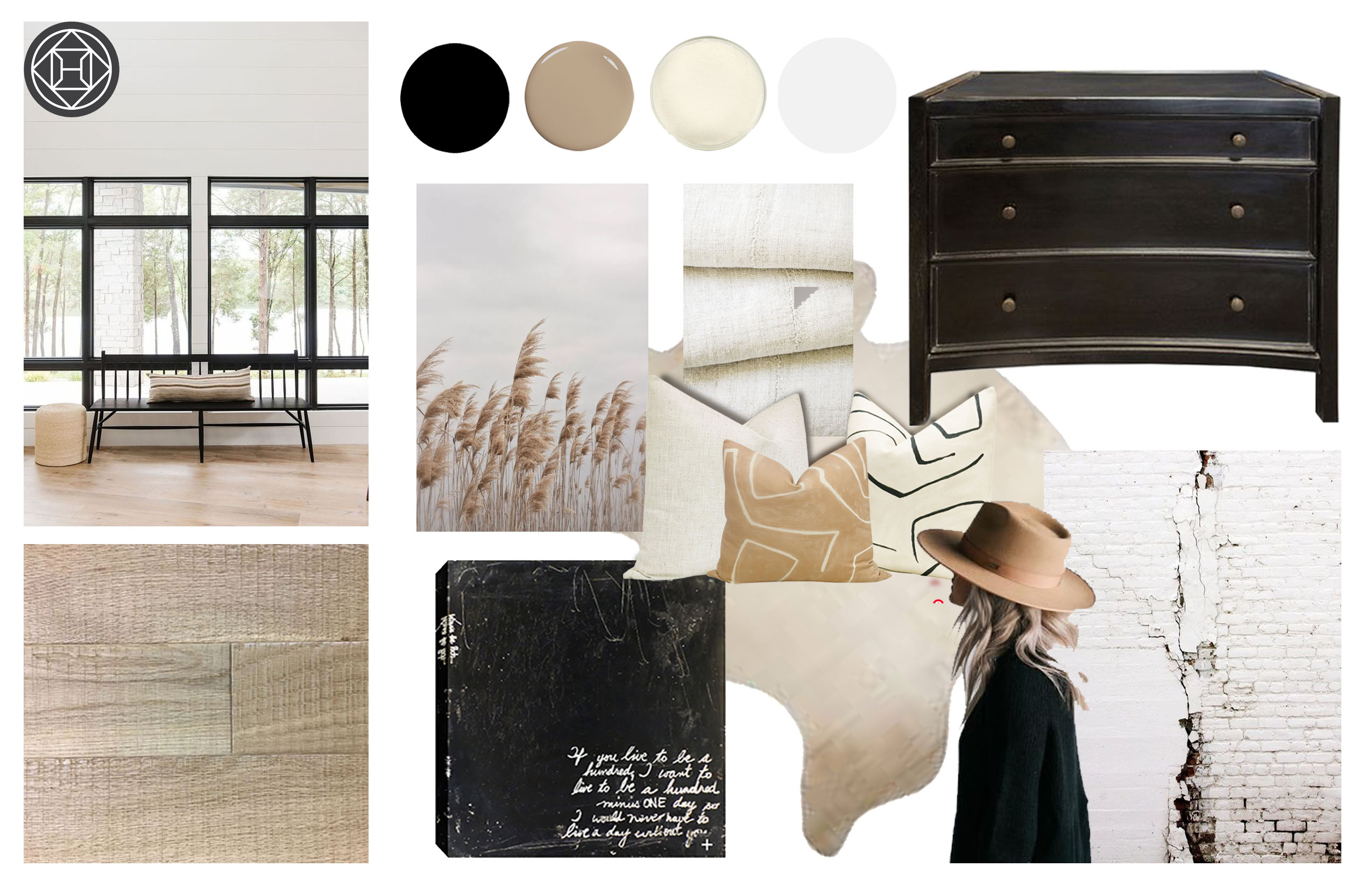Even with 20/20 sight, it’s hard to see vision clearly as a beginner. Redesigning or staging a room for the first time is intimidating if you’re unfamiliar with the process, and even with an expert in tow, communicating your style and preferences can be challenging. “If I designed your living room but only gave you a written description or a list of items, it would be hard to envision, right?” asks Havenly designer Stacy Harwood. “Visuals are a common language.”
 Putting everything down on paper (or a Pinterest board) eliminates any miscommunications you could have with your designer. “It gets everyone on the same page right from the get-go and avoids any miscommunications in style direction,” Stacy explains. For example, when you think mid-century, it might incorporate completely different elements than the ones the designer you’re working with conjures up.
Putting everything down on paper (or a Pinterest board) eliminates any miscommunications you could have with your designer. “It gets everyone on the same page right from the get-go and avoids any miscommunications in style direction,” Stacy explains. For example, when you think mid-century, it might incorporate completely different elements than the ones the designer you’re working with conjures up.
Designers also use a client’s vision board to learn more about them, Stacy says, “A client may not know what their style is, or how to describe it, but we as designers can look at their chosen images and find commonalities that the client may not necessarily see.”
So whether you’re beautifying your bathroom or dreaming up a new dining room, creating a vision is an essential part of the process before you get started. If you’re not a pro or even “collage-challenged,” have no fear—with Stacy’s help, we’ve compiled a few helpful pointers to illuminate your vision board.
Vision boards aren’t just about furniture and fabric swatches, it’s about creating a feeling or atmosphere for the room you’re designing. This isn’t just a shopping list for the room. Think about how you want to feel when you walk into the room. If an image can’t describe a feeling, don’t shy away from jotting down a word or two, such as “calm” or “vibrant.” Elements should paint a picture of vibe, like airy and naturally lit, but can also embody the way you want guests to feel in the space.
Don’t feel that you need to limit yourself to interiors, says Stacy, “images can be of anything—landscapes you love, fashion inspiration you’re drawn to, textures you like, etc.”
Don’t start by limiting yourself to the dimensions of a physical vision board. Instead, collect anything and everything that sparks your interest. You can start easy, tearing out pages of magazines as you read them, and saving them in a pile, says Stacy. As you get the hang of it, capture anything that inspires such as pictures of a restaurant you like, chips from the paint store, or even a display you love at the florist. “Don’t put too much thought into what you’re collecting; if you like it, save it.”
The magic of a vision board comes from the final step, editing. Physically pull everything that you have together; that means printing out the images you snapped or pictures you Pinned, and bring into one big pile.
Next, “toss anything that doesn’t inspire you,” instructs Stacy. When you place your favorite pieces of inspo side by side, a pattern might start to emerge.
“You’ll likely see that about three-quarters of what you’ve saved is likely very similar, and about a quarter will seem out of place. Toss the ones that are out of place, and what’s left is your vision board.”
When you look at the compiled board, it’s not uncommon to feel that something is missing, Stacy acknowledges. In that case, let your designer know what else you want to see on the board, and they can help you fill the gaps.
You don’t have to be artistic, or even crafty, to create a vision board. Think of yourself as an explorer out in the wilderness unearthing discoveries. A style will come to you, as long as you’re open to looking for it.
Ready to start your vision board? Take Havenly’s interior design quiz to help find your style.

